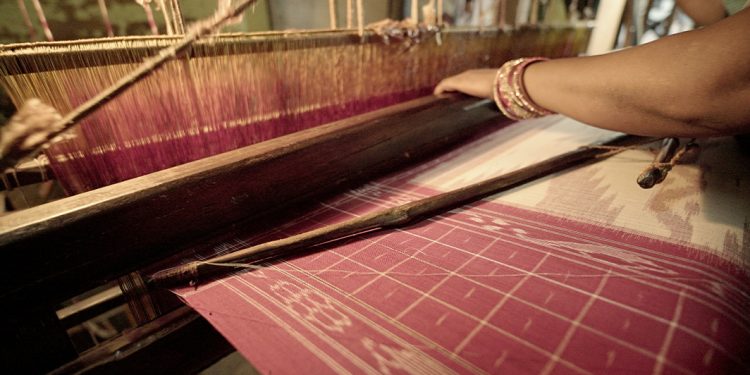Dr Sanjay Kumar Panda
The National Handloom Day is scheduled to be observed August 7, 2021. Initiated by Prime Minister Narendra Modi in 2015 in Chennai, this celebration seeks to reiterate the importance of handloom in the socio-economic-cultural fabric of our country and boost the morale of the weavers to continue with this great tradition. This occasion provides an opportunity for introspection of the strength and weakness, the success and failure of the past and to suggest actions for the future of handloom in a different way. It also focuses on improving the condition of the weavers on a sustainable basis.
Advent of power loom made handloom lose its monopoly and led to the decline in the economic status of the weavers. The Central and state governments took various initiatives for promotion of handloom which has so far served only a limited purpose. This is evident from the fact that number of handlooms came down to 35.22 lakhs. As per the 4th National Handloom census held in 2019-20, the average monthly income of over two third (67.1%) weavers is less than `5,000 – which is the single-most important reason for the declining trend of handloom. Relatively low earnings have led the young weavers to become disillusioned with their traditional occupation and shift to alternate occupations. Restrictions on movement, marriage, festivals due to Covid-19 since 2020 have further squeezed the available marketing opportunity and worsened the financial condition of the weavers.
This has necessitated a closure look at the strategy to promote handloom and redesign it to meet the challenges more effectively. Quality production with diversity covering zero defect, new colours, and new designs as per the changing taste of the customer needs to be the key factors for handloom to compete and retain its place in the market. This needs to be supplemented by doing the business in a different way and by empowering weavers and connecting them with the market and customers within the country and abroad directly. These will reduce the cost of transaction and increase their earnings substantially. The weavers need to pursue the cost, time and distance related advantages of information technology based social media like WhatsApp, Facebook, Instagram aggressively in reaching out and educating customers about the unique features, and fetching a premium price for their handloom products.
In this backdrop, the celebration provides an opportunity to spot the silver linings and highlight achievements of Padmashree Govardhan Panika, famous for Kotpad weaves in Koraput, and Sukanti Meher, a national award winner from Baragarh, who have been succeeded in carving out a niche for them and their products by connecting with the customers directly on the digital platform. This has enabled them to overcome the Covid-related setbacks. First generation handloom startups like Duhieta have set innovative examples in promoting high value quality handloom digitally and providing the skilled weavers working with it wages thrice or four times higher than the regular income.
Corporate-led interventions like “Antaran” of Tata group and “Handmade in India” of HSBC are creating silent revolution in the rural areas under their Corporate Social Responsibility initiatives. Young professionals deployed in the traditional handloom clusters have been empowering the eavers with market information on consumers’ preference and technical guidance for production and marketing of handloom in a different way. Several entrepreneurs from traditional weavers’ families in Bargarh, Maniabandh and Gopalpur are motivated to launch their startups.
Yet another heartening fact relates to Non-Resident Indians (NRIs) volunteering to showcase the traditional glory of Indian handloom before the global audience and promote it with fashion in America and Europe, as a way of giving back to their country of origin.
These new developments need to be appreciated by the government for reorienting its planned interventions to catalyze promoting handloom on a sustainable basis. Startup entrepreneurs need to be supported with working capital under Mudra scheme along with handholding for taking forward their tasks to its logical end. Physical infrastructure like stable information technology connectivity, facility for holding decentralised training in quality dyeing and designing and provision of technical support at the village-level need to be ensured. Mobilisation of the students and faculty of the National Institute of Fashion Technology to help the weavers on the loom will augment this further and create a win-win situation for the weavers and the students. In the interim period, one time grant may be provided to the active weavers to tide over the Covid pandemic on similar lines as given to the farmers.
Reinventing handloom and redesigning it with use of technology and induction of young entrepreneurs will take it to great heights in the 21st century.
The writer is former Secretary, Textiles, Government of India. Views expressed are personal.






































